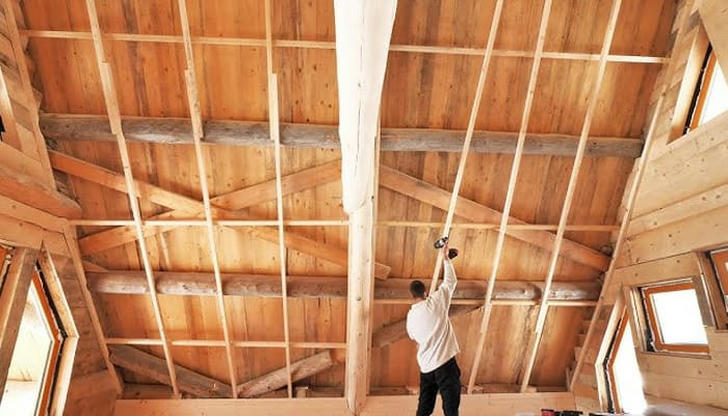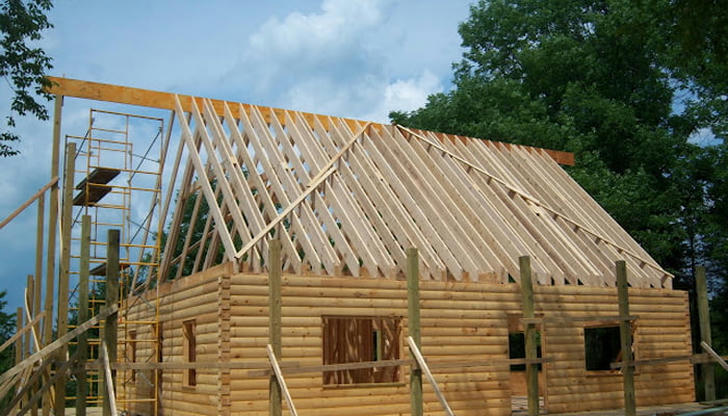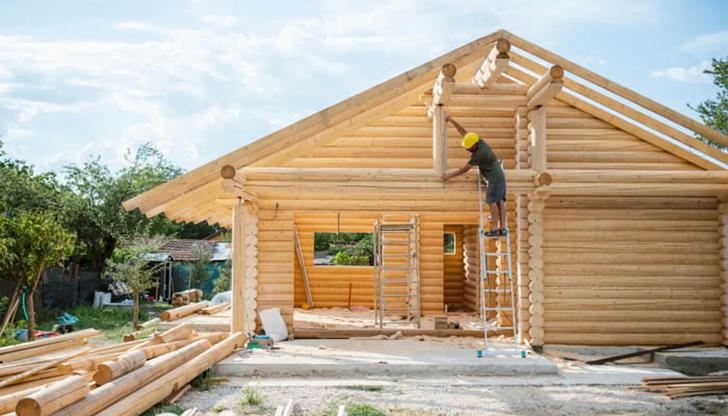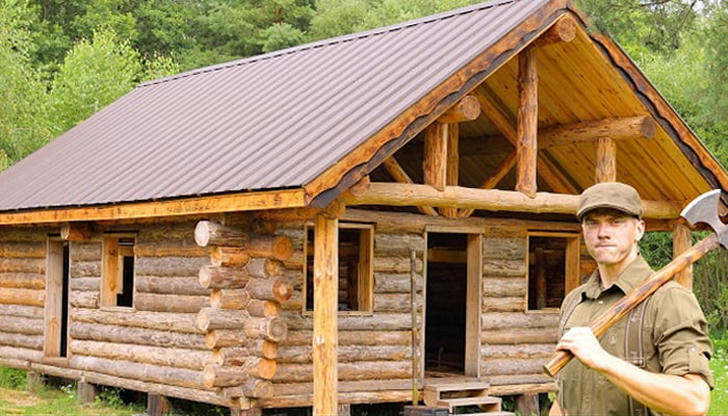Roofing for Log Cabins: Best Materials and Installation Tips

Roofing for Log Cabins: Best Materials and Installation Tips
Introduction: Why Roofing Matters for Log Cabins

A log cabin's roof is more than just a cover --- it's the structure's first line of defense against nature and the final touch that defines its personality. From harsh mountain winters to humid coastal summers, your roof plays a critical role in protecting your logs from moisture, mold, and UV damage.
Choosing the right roofing material isn't only about aesthetics; it's about ensuring your cabin's durability, insulation, and energy efficiency. The wrong choice could mean constant repairs, while the right one could keep your cabin sturdy and beautiful for decades.
Whether you're building a new retreat or renovating an old homestead, understanding how to pick, install, and maintain your roof is key to making your log cabin truly stand the test of time.
Key Factors to Consider Before Choosing a Roof

Before you start comparing materials, it's important to understand what your roof will face and how it fits your overall cabin design. Here are the main factors to evaluate:
• Climate and Weather Conditions
Your local environment dictates everything. Metal roofs excel in snowy or windy areas thanks to their shedding ability, while cedar shakes may perform better in dry, forested settings. Always match material durability to your regional climate.
• Roof Pitch and Cabin Design
Log cabins come in many styles --- from classic A-frames to wide gable roofs. The steeper the pitch, the better it handles snow and rain, while flatter roofs require advanced drainage systems. Choose materials that align with your roof's slope and structure.
• Budget and Longevity
Every roofing option involves trade-offs. Asphalt shingles are inexpensive upfront but need replacement sooner. Metal and tile roofs cost more initially but can last half a century or longer with minimal upkeep.
• Aesthetic Harmony
Your roof should complement the natural tones and textures of your logs. Earthy shades and matte finishes tend to blend seamlessly with wood exteriors, creating that timeless, rustic charm.
• Environmental Impact
Eco-conscious builders should consider materials made from recycled content or those that can be recycled after use. Metal, clay, and certain synthetic composites score well on sustainability and lifespan.
Best Roofing Materials for Log Cabins

Metal Roofing
Metal roofing is one of the most popular and practical choices for log cabins today. It's incredibly durable, fire-resistant, and can easily last 40--70 years. The slick surface helps snow slide off, preventing heavy accumulation.
Pros: Long lifespan, low maintenance, energy-efficient, fireproof.
Cons: Higher initial cost, can be noisy during storms.
Best For: Mountain cabins or areas with heavy snow and rainfall.
Tip: Choose a matte or weathered metal finish to maintain a rustic, natural look.
Asphalt Shingles
Asphalt shingles are the go-to choice for many cabin owners due to their affordability and simplicity. Modern architectural shingles even mimic wood texture while offering better durability.
Pros: Affordable, easy to install, widely available.
Cons: Shorter lifespan (15--25 years), moderate insulation.
Best For: Budget-conscious builds or mild climates.
Tip: Opt for darker tones to contrast with light-colored log walls and improve visual depth.
Cedar Shakes and Shingles
For those who want authenticity, cedar is unmatched. It provides a natural, timeless look and enhances your cabin's insulation. However, it requires regular sealing and cleaning to resist mold and pests.
Pros: Beautiful, natural insulation, fits rustic designs perfectly.
Cons: Needs maintenance, flammable without treatment.
Best For: Traditional or forested cabin settings.
Tip: Treat cedar regularly with water repellent and fire retardant for long-term protection.
Clay or Concrete Tiles
Clay tiles add an elegant, old-world feel to log structures and can last over 75 years. However, they are heavy, meaning your cabin frame must be reinforced.
Pros: Extremely durable, fireproof, low maintenance.
Cons: Expensive, heavy, and may need structural upgrades.
Best For: Warm, dry climates or cabins with strong foundations.
Tip: Use curved tiles for improved airflow and cooling in hot regions.
Synthetic or Composite Roofing
Synthetic materials replicate the appearance of slate, shake, or tile but with less weight and upkeep. They're UV-resistant, flexible, and easy to install.
Pros: Lightweight, realistic texture, low maintenance.
Cons: Varies in quality by brand, mid-to-high price range.
Best For: Modern cabin owners wanting long-term convenience.
Tip: Verify UV and fire ratings before choosing a composite brand.
Installation Tips for Long-Lasting Performance

Even the best material can fail if installed incorrectly. Follow these expert guidelines to ensure a roof that performs --- and lasts --- for decades:
Start with a Proper Underlayment
Use a waterproof membrane under your roofing to protect logs from leaks and condensation. This is especially critical in humid or snowy climates.Ensure Adequate Ventilation
A well-ventilated roof prevents trapped moisture, which can lead to rot and warping in the log structure below.Use Corrosion-Resistant Fasteners
Opt for stainless steel or galvanized nails and screws to withstand moisture and temperature shifts.Mind the Overhangs
Extended eaves protect log walls from direct rain and sun exposure, reducing maintenance costs over time.Install Proper Flashing and Gutters
Flashing around chimneys, skylights, and joints prevents water seepage. Clean gutters regularly to avoid log rot near the base.Hire Experienced Cabin Roofers
Log cabins are unique structures --- always work with contractors familiar with timber and log systems to prevent costly installation errors.
Cost Overview & ROI

Roofing is one of the most significant long-term investments in a log cabin. Understanding costs upfront helps you make a choice that fits both your budget and your lifestyle.
| Roof Type | Average Cost (per sq. ft.) | Lifespan | Maintenance Level |
|---|---|---|---|
| Asphalt Shingles | $3 -- $6 | 15--25 years | Low |
| Metal Roofing | $7 -- $12 | 40--70 years | Very Low |
| Cedar Shakes | $6 -- $10 | 25--35 years | Moderate--High |
| Clay or Concrete Tile | $10 -- $18 | 50--80 years | Low |
| Synthetic/Composite | $8 -- $14 | 40--50 years | Low |
Balancing Cost and Value
Short-Term Savings: Asphalt shingles are ideal for limited budgets but may need replacement twice in the lifespan of a metal roof.
Long-Term ROI: Metal or tile roofs cost more upfront but offer decades of protection, lower insurance premiums, and energy efficiency benefits.
Resale Impact: A durable, visually appealing roof can increase your cabin's resale value and attract buyers looking for low-maintenance homes.
Remember: Spending more on high-quality materials and skilled installation pays for itself in fewer repairs, lower maintenance, and higher property value.
Final Thoughts: Choosing the Roof That Fits Your Cabin's Soul

Your log cabin roof isn't just another building material --- it's a reflection of your lifestyle, your environment, and your connection to the outdoors.
If you live in rugged mountain terrain, a sturdy metal roof may give you peace of mind during blizzards. For those nestled in wooded valleys, cedar shakes can blend beautifully with the trees, aging gracefully alongside your logs. And if modern simplicity is your style, synthetic roofing can offer a clean, efficient look with minimal care.
Whatever you choose, focus on longevity, compatibility, and craftsmanship. The best roof is one that protects your home quietly --- through every storm, every season, and every memory made beneath it.
